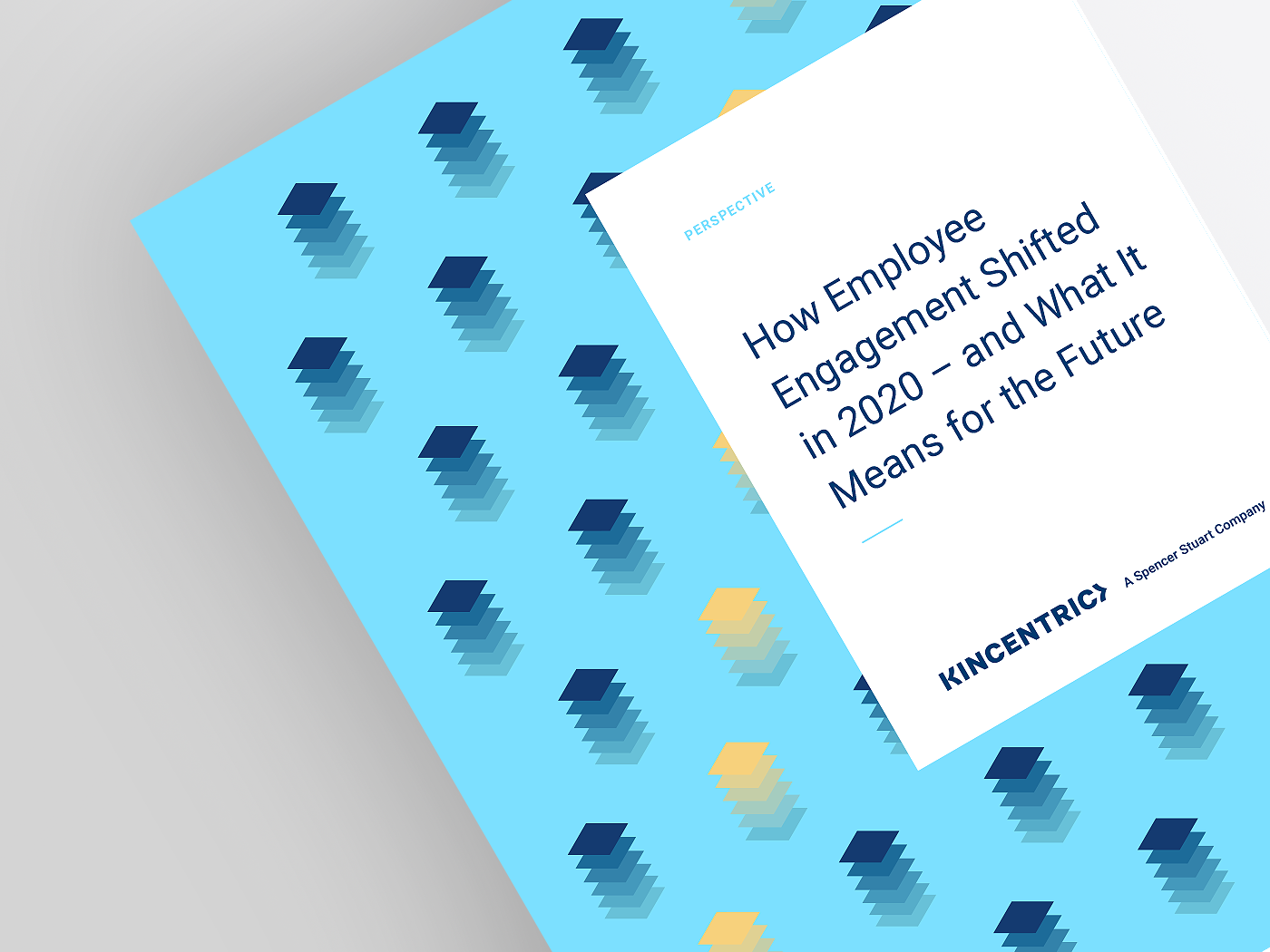
Without a doubt, 2020 has been the most dramatic representation of the acronym VUCA (volatility, uncertainty, complexity and ambiguity) in recent memory. Our lives – in and outside of work – have changed in a variety of ways due to the COVID-19 pandemic. Some of us were thrust to the front lines, others became homeschool teachers, and many experienced job losses and/or pay reductions. Not surprisingly, these factors and others have had a significant impact on employee engagement.
How has employee engagement changed during 2020? The graph below highlights the change over each quarter for our clients around the globe.1 We can see an inverse-U-shaped curve, with a peak in Q2 and a regression in the second half of 2020 that takes us back to levels close to those observed in Q1. As a result, our clients are asking three basic questions: What caused the increase in employee engagement early in the pandemic? Why the decline? And what can we do now to re-engage employees?
Surprisingly, perhaps, employee engagement was at its highest when uncertainty and stress caused by the virus – at least in the western world – were first starting to take hold. Why?
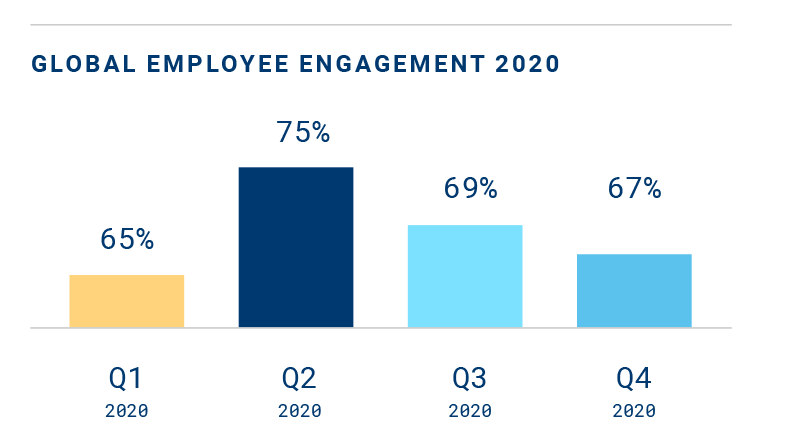
Although employees continued to demonstrate resilience and perseverance, the high levels of engagement observed in Q2 2020 became difficult to sustain during so much uncertainty. While organizations and employees alike have learned a lot from the experience and have established a “next normal,” a decline in employee engagement was expected for a variety of reasons:
In our 2020 Global Trends in Employee Engagement report, we discussed employee engagement and COVID-19 in the context of traditional research on organizational change and predicted a regression in employee engagement roughly following the change curve illustrated in the figure below. We have seen similar patterns in employee engagement following major societal events like the Great Recession in 2009. While employee engagement rose during the “acute crisis mode” in Q2, some of the organizational and economic realities began to really set in during the second half of the year. Events like restructuring, layoffs and pay cuts – in addition to the constant stress of an ongoing pandemic – combined to create a significant drag on employee engagement.
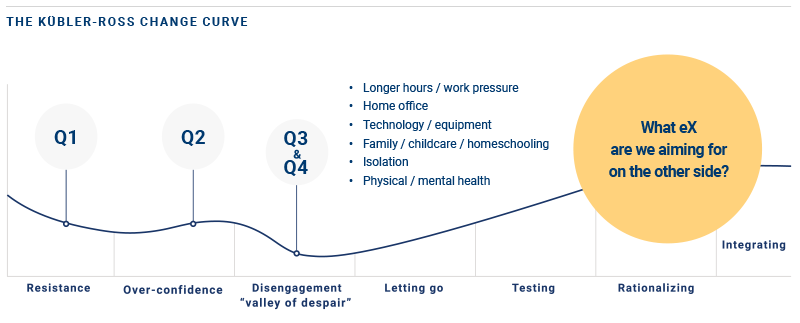
The drop in employee engagement was expected in part because we are all experiencing some version of “stress fatigue” – and everyone is tired of being tired. Even in Q2, our clients’ employees were frequently and negatively commenting about stress, pressure and concerns around mental health. In reality, few to none of the driving factors behind those comments have gone away in most markets. Further, we have seen many negative comments regarding increased workloads and frustrations over longer hours due to an inability to disconnect. While people were willing to deal with these changes temporarily during a time of crisis, it has carried on for months now and exhaustion has set in.
Leaders continue to struggle to build teams and connect people in a virtual environment. Onboarding employees and ensuring they develop a feeling of connection to the team and the company is no small task when there is a lack of physical contact between team members. Common tasks like performance management and goal setting are frustratingly vague, as business and economic realities are still unknown. Finally, leaders are employees too, and are experiencing much of the same stress fatigue. We know that a leader’s own engagement impacts the engagement levels of their team, and that the more engaged leaders are, the more effective they are at connecting employees to the organization and senior leadership. If leader engagement drops, it’s not surprising to see employees’ engagement drop as well.
When we discuss these trends with our clients, inevitably the question turns to “so what can we do about it?”. While there are many factors that determine the most effective action within specific organizations, it’s always useful to think about how your specific role can help your teams move forward:
You’re stretched thin, but employees still need you to actively listen, be empathetic, demonstrate humility, give constant feedback and reinforce messaging from senior leadership. The good news is that many managers are already doing this! Based on our recent research, 80% of employees said their managers were “demonstrating care and concern”. These caring leadership behaviors are now expected, and employees won’t tolerate a return to command-and-control management model. It is also critical to remember that employees are not all impacted by the pandemic equally. For instance, during pulse surveys conducted in Q2 2020, we observed that in many organizations with large gender gaps, women were having a different and less positive experience than men.
Ask yourself: As a manager, how can I tailor my leadership style to the unique needs of each of my direct reports?
While employees need their manager to demonstrate caring leadership, but as a senior leader they need you to be bold, courageous, clear and confident, and reinforce the sense of purpose/connection. Unpredictability and uncertainty are a huge part of amplified stress in the workplace, and you can help minimize that through clear messaging and strategy. You can’t afford a decline in commitment levels, especially with the situation remaining so volatile in so many markets. Many of our clients are thinking about how to maintain their culture in a virtual environment or, alternatively, how a hybrid work environment will be rolled out in the future when it is safe to return to offices.
Ask yourself: As a senior leader, how can I best remove the uncertainty around new initiatives and stay highly accessible to our people?
You have steered your organization through 2020 by providing senior leaders with the tools and programs necessary to lead effectively through the pandemic, while also ensuring you have the right programs and policies in place for your workforce. The next big bet is improving the experience of the broad manager segments within your organization, with a focus on ensuring they have the right tools, programs, coaching, capability and support required to re-engage frontline employees. There may also be opportunities to refine certain HR roles and structures in your operating model to enhance capability and capacity. For example, certain roles in HR, such as the HRBP, are struggling right now, demonstrating low engagement scores and high levels of stress. Part of the call to action as we emerge from the COVID-19 crisis is to pause to reflect on what is required to preserve the engagement of your HR community.
Ask yourself: Do I have the right structures and processes in place to support and enable my HR team?
Finally, regardless of your role, don’t forget that you are an employee and an individual yourself. The line between work and home has all but disappeared for many of us, and the stresses you face outside of work can increasingly impact your experience and engagement at work. We all need to prioritize self-care, focus on our mental and physical health, and cherish what we have. If we can do this, we can re-engage ourselves and those around us.
German Translation | Lesen Sie auf Deutsch
Polish Translation | Czytaj po polsku
1. Based on 1,198 companies who measured engagement with Kincentric during Q1–Q3 of calendar year 2020.
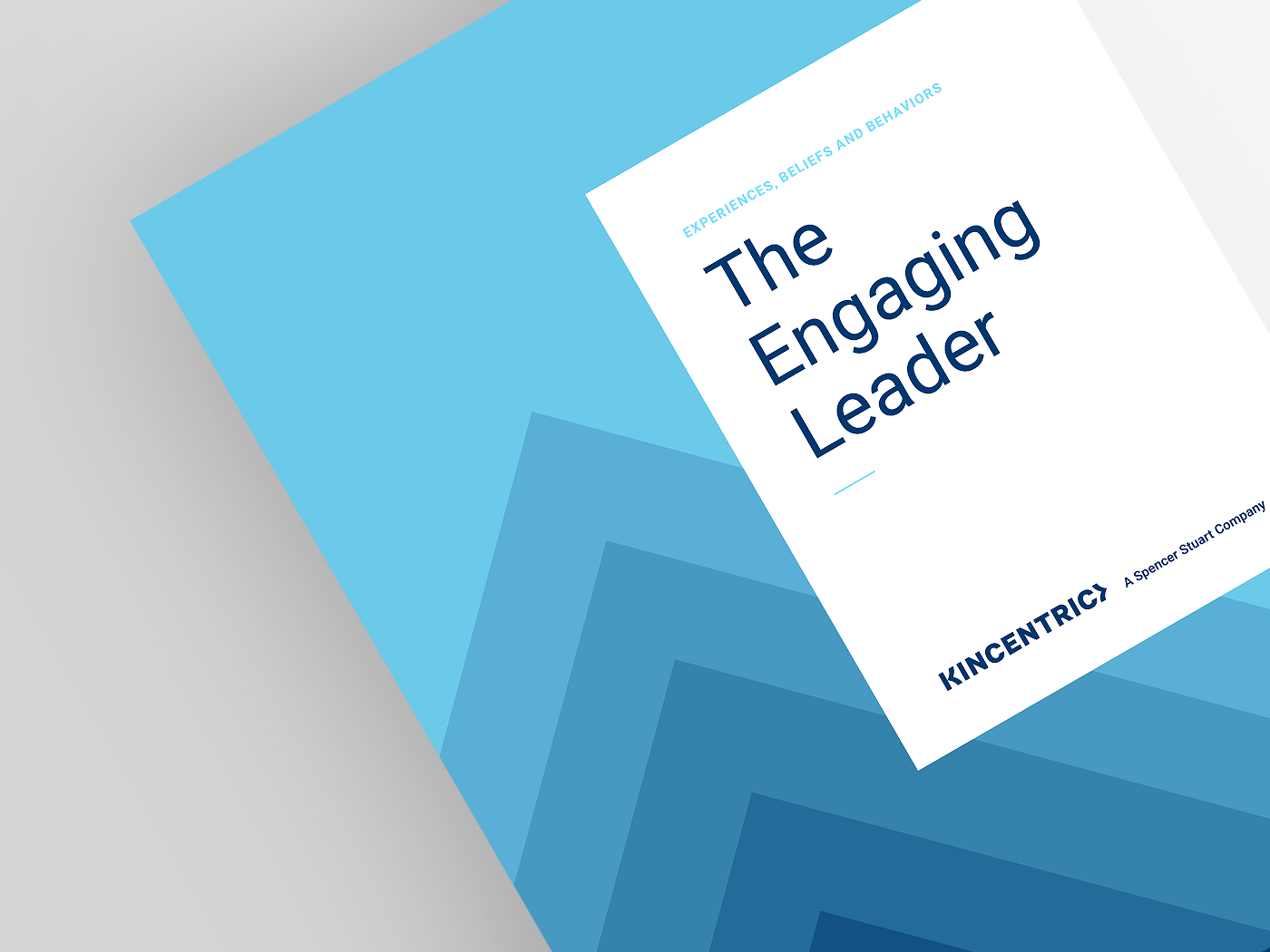
An engaging leader profile is built through the leader’s guiding beliefs, displayed behaviors, and critical experience.
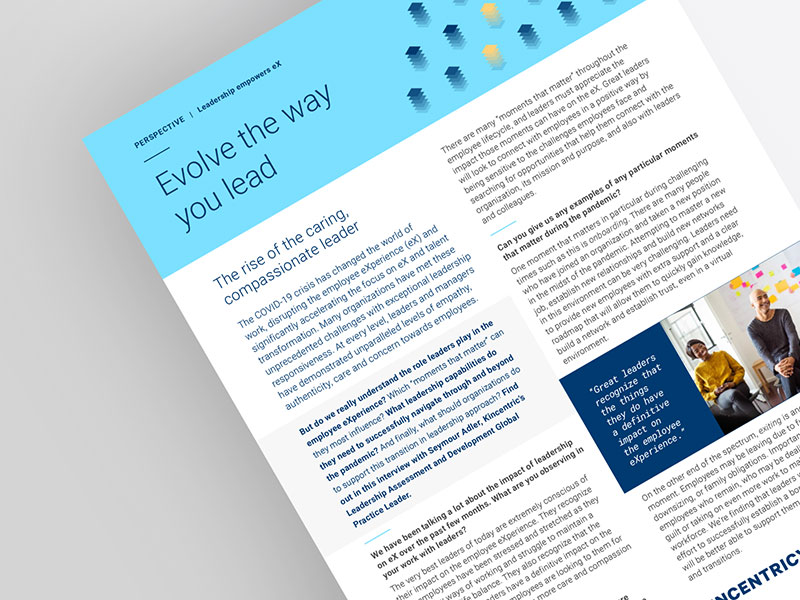
Many organizations have met the unprecedented challenges of COVID-19 with exceptional leadership responsiveness, demonstrating empathy, care and concern. How can leaders build those capabilities for the long term and successfully navigate through and beyond the pandemic?
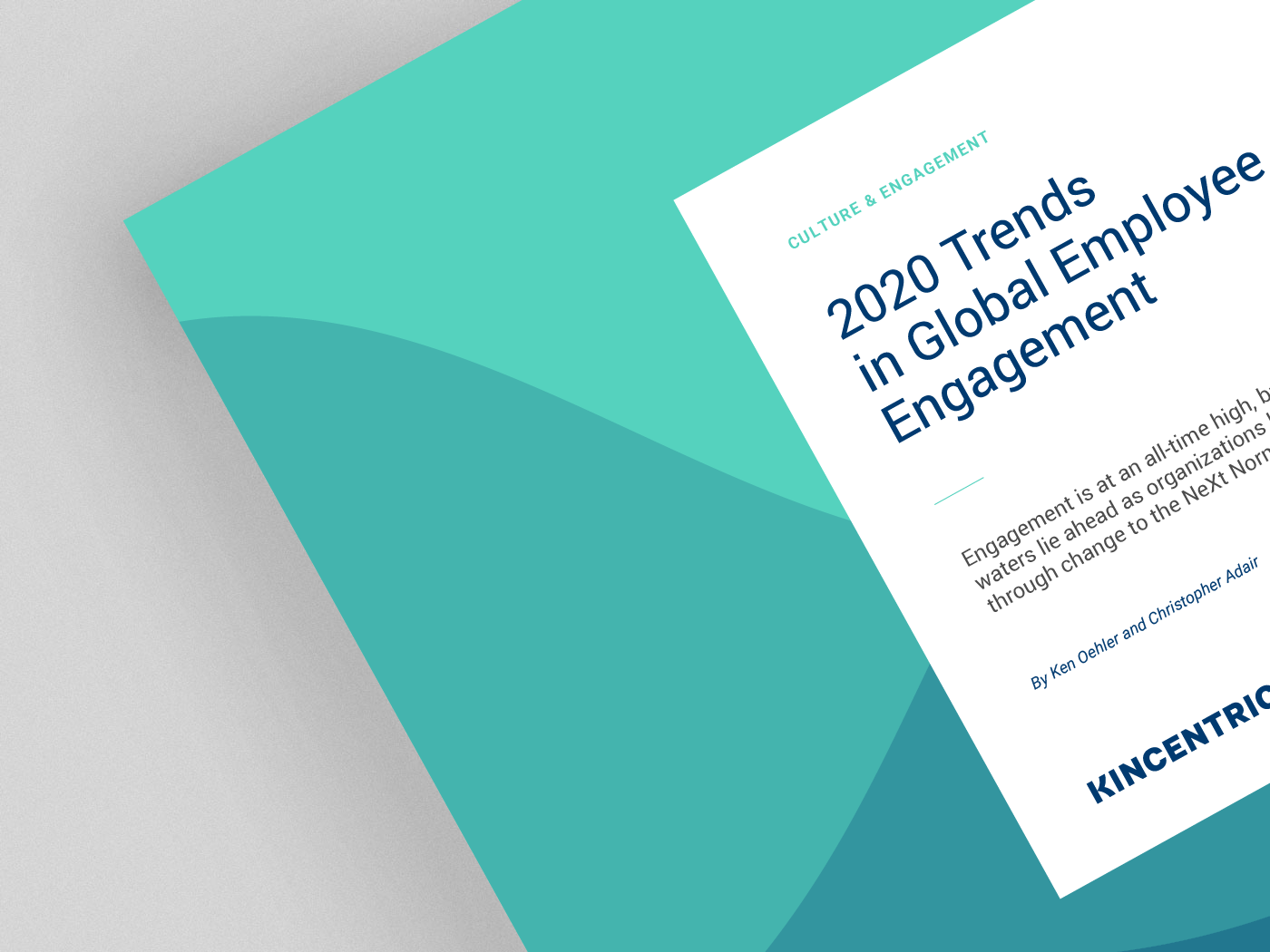
Employee Engagement is at an all-time high, but rough waters lie ahead as organizations lead through change to the NeXt Normal.
Want the latest insights delivered straight to your mailbox?